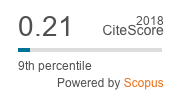INFLUENCE OF TYPE OF CLOTHING ON FORMATION OF FIRST IMPRESSIONS AND ON THE REACTION TO A STRANGER
Keywords:
Non-verbal communication, First impressions, Person perceptionAbstract
The present research was carried on aiming to teste the
influence of type of clothing on formation of first impressions and on the
reaction to a stranger in a field study. In study 1, 120 undergraduate
students (60 male and 60 female) judged one photograph of a male or of a
female stimulus person, well dressed or poorly dressed. The results
obtained indicated that stimulus persons were more favorably perceived when well dressed. Clothing was important in person perception,
especially when the subject was a male and the stimulus person, a
female. In study 2, 160 pedestrians (80 male and 80 female) were asked
about the location of a nearby public park by a female or a male
confederate, well dressed or poorly dressed. The female confederate
received longer information and more smiling than the male confederate,
regardless of subjects' gender. In the field study, the confederates'
clothing had no effect on subjects' behavior.
References
related to females' clothing style. Perceptual and Motor Skills, 65, 406.
Dion, K. (1972). Physical aítractiveness and evaluations of children's transgressions.
Journal of Personality and Social Psychology, 24, 207-213.
Dion, K., Berscheid, E., & Walster, E. (1972). What is beautiful is gooú. Journal of Personality
and Social Psychology, 24, 285-290.
Francis, S.K., & Evans, P.K, (1987). Effects of hue, value, and style of garment and
personal coloring of model on person perception. Perceptual and Motor Skills, 64,
383-390.
Keppel, G. (1973). Design and analysis: A researcher's handbook. Englewood Cliffs:
Prentice-Hall.
Osgood. C. E., Suei, G. J., & Tannenbaum, P. M. (1957). The measurement of
meaning. Illinois: University of Illinois Press.
Otta, E., Petri, R., Miranda, H. N., Souza, R. C. R. Hotimsky, K., Valero, P. V. B.,
Gola, N., Rubin, D., & Silva, D. H. (1989). Influência de adereços na formação de
primeiras impressões. Revista Brasileira de Pesquisa em Psicologia, 1, 47-49.
Rist, R. O (1970). Student social class and teacher expectations: the self-fulfilling
prophecy in ghetto education. Harvard Educational Review, 40, 411-451.



